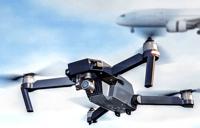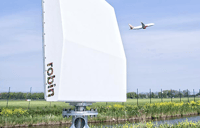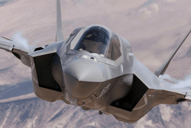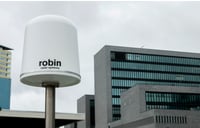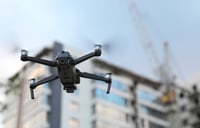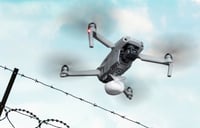Unmanned aerial systems (UAS) form an integral part of the modern military arsenal. From covert reconnaissance and surveillance to espionage and tactical strikes involving explosives or chemical weapons, UAS technology has forever changed the face of warfare. And governments are taking notice.
The U.S. set up a Counter Drone Office in 2020 to tackle the growing UAS threat. A year later, Congress tasked the Pentagon with creating a counter-UAS system, allocating $668m to research and development.
Numerous companies have emerged to satisfy the urgent need for reliable and scalable counter-UAS army technology. In this article, we explore the different options available to the armed forces and how use they use them.
What is Counter-UAS and How Does it Work?
Counter-UAS encompasses a range of technologies and systems designed to protect buildings and people from unpiloted aircraft, like drones.
It’s less common in civil aviation, because federal laws such as the Aircraft Sabotage Act impose strict controls on what airports can use to combat threats. However, such rules don't apply to the armed forces, and many nations have and continue to invest in counter-UAS technology. For example, the U.S. Department of Defense has used counter-UAS to repel airborne threats at installations and personnel serving overseas since 2014.
Counter-UAS technology falls into two broad categories: detection and mitigation.
Detection
Detection equipment identifies, classifies, and tracks unmanned aerial systems. It encompasses passive sensors (cameras and microphone arrays) and active sensors (radio frequency analysers and drone detection radar).
The right blend of detection solutions gives ground teams early warning of potential threats, enabling faster and more accurate classification, and provides the tactical insights they need to organise an effective response.
Unmanned aerial systems come in various sizes, which often dictates their maximum range and payload capacity. Swift detection and accurate classification is therefore vital to enable ground teams to determine whether the target has the potential to carry dangerous payloads, like explosives, and organise their defence.
Mitigation
Mitigation technologies, also known as countermeasures, neutralise, repel, or destroy unauthorised units that enter protected airspace. Common countermeasures encompass low-tech solutions, like net guns, and more advanced alternatives such as signal jammers and high-power microwave devices that disable or destroy the target outright.
5 Popular Counter-UAS Army Technologies
1. Radio Frequency (RF) Analysers
RF analysers intercept the radio signal that connects the UAS to its controller. They fall into one of two categories: direction finders and RF signal decoders. Basic systems recognise common drone makes and models, while advanced systems identify the unit’s MAC address to pinpoint the pilot’s location.
Although RF analysers have a more limited operational range than other UAS detection systems, they’re cost-effective and easy to deploy.
2. Drone Detection Radar
Specialist drone detection radar is one of the most effective detection technologies on the market. Explicitly designed to identify small, fast-moving objects that traditional systems often miss, radar provides early warning of potential threats over a wide area and in a range of conditions.
Compact systems, like our flagship drone detection radar, IRIS®, allow for fast deployment and reliable detection even on the move (up to speeds of 100 km/h). This makes them ideal for protecting moving targets like military convoys.
They can also:
- Track multiple targets simultaneously
- Distinguish between birds and drones
- Detect hovering, autonomous, and fixed-wing drones
Radar gives the broadest coverage and earliest warning of any counter-UAS army technology, but they don't provide visual details, such as payload. For that reason, radar is most effective when it lies at the heart of an integrated system where it can cue other sensors, such as cameras, to provide a complete picture.
3. Radio Frequency (RF) Jammers
RF jammers are static, mobile, or handheld devices that transmit a targeted beam or omnidirectional wave of radio energy towards a UAS. This interrupts the unit’s control signal, causing it to do one of four things:
- Make a controlled landing
- Return to its launch location
- Fly off in a random direction
- Drop out of the air
RF jammers are effective against most models and can even combat UAS swarms. However, they can cause units to behave unpredictably and interfere with other radio signals in the target's vicinity.
4. Cyber Takeover Systems
Cyber takeover systems impersonate a drone’s control signal, enabling security personnel to remotely hack into and take control of the unit. Once you’ve assumed control of the target, you can redirect it to a new location and access any onboard equipment or data.
Cyber takeover systems have a lower risk of collateral damage than some mitigation solutions. However, they require an up-to-date library of commercial drone controller signals to work, rendering them ineffective against homemade or modified equipment.
5. High-power Microwaves (HPMs)
HPMs are at the far end of the counter-UAS spectrum. They generate powerful energy beams towards potential threats, using antennae to direct the beam. Not only does this disrupt the radio signal between the UAS and its controller, it can disrupt and even destroy the onboard circuitry.
HPMs are effective against piloted and autonomous drones and drone swarms. However, they can cause collateral damage to nearby electronic equipment.
Why Counter-UAS is Indispensable to Today’s Armed Forces
The proliferation of inexpensive, easy-to-deploy UAS technology makes drone warfare a viable solution for state and non-state actors alike.
Russian forces have launched 4,630 drone strikes since invading the Ukraine in 2022, prompting the Ukrainian government to deploy dedicated counter-UAS technology to neutralise the threat. And it's working, with reports suggesting the country's upgraded air defences have successfully stopped 78% (3,605) of attacks.
Elsewhere, Syrian government forces increasingly rely on first-person view (FPV) suicide drones to target opposition military sites and civilian areas. While various terrorist groups use drones to spread propaganda and launch large-scale attacks, including pilot-to-target attacks.
Faced with such diverse threats, it’s no surprise that governments are investing heavily in counter-UAS army technology to protect air bases, military assets, and front-line troops.
The future of air defence
Effective counter-UAS army technology must be able to detect drones in a range of conditions, including busy urban environments where obstacles limit visibility.
An operational assessment conducted by the U.S. Army’s Joint Counter-small Unmanned Aircraft Systems Office found that employing counter-UAS solutions in isolation achieves limited results. Instead, they argue that a system-of-systems approach is the key to an effective defence.
A system-of-systems approach combines complementary detection and mitigation technologies into a integrated defence network. This means cameras, RF analysers, signal jammers, and drone detection radar working in harmony to keep the skies safe.


